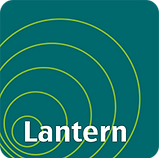Lantern

Nature recovery in the Surrey Hills National Landscape
In 2020, Lantern managed Surrey Hills National Landscape’s Defra funded Test and Trial project - a landowner led and landscape scale approach to identifying priorities for nature recovery and for providing input into the structure and delivery of the Environmental Land Management (ELM) scheme.
What is ELM? A key initiative to support the UK Government’s Agricultural Transition, ELM is designed to pay farmers and landowners for provision of environmental and climate goods and services and replaces the EUs Common Agricultural Policy.
A key output for this project was to produce a landowner and manager-led Nature Recovery Strategy for the Surrey Hills, with an accompanying technical guidance document to support the planning of management activities for the habitats and indicator species identified through the project. The Nature Recovery Strategy was co-designed by landowners and managers with support from the project team. The project used freely available data for species and worked closely with Ordnance Survey to produce maps for the area.
Lantern led the project which was structured into five elements of work:
-
Identifying priority habitats and species – A locally relevant set of habitats and indicator species was co-developed by landowners and managers, local technical consultants and the project steering group. A landowner and manager guidance document on habitats and species was produced.
-
Data collection and mapping – Maps were produced by Ordnance Survey using freely available data provided by a range of local, regional and national organisations.
-
Workshops – Four online workshops (each repeated twice) were held to engage with Surrey Hills landowners and managers about the project themes.
-
Development of Nature Recovery Strategy – A landowner and manager-led Nature Recovery Strategy was produced for the Surrey Hills, view here.
-
Project outreach, liaison, and communications – The project was promoted and discussed at Surrey Hills Symposium and species pages were developed for the general public. We also liaised with a Surrey University PhD research project on the role of remote monitoring of habitats as evidence of activities and a project that assessed the state-of-the-art use of Earth Observation technologies for soil organic carbon (SOC) measurements and its potential for the current and future monitoring, reporting and verification of SOC.
This was a fascinating project to manage and Lantern had the opportunity to work with a broad range of stakeholders, which provided a valuable diversity of viewpoints to the project. The top five learning points:
-
Spatial prioritisation of species and habitat should not restrict landowners and managers purely by their location and the availability of existing species and habitat records. The strategy should allow for local knowledge and input to guide decisions and provide flexibility and fluidity in terms of spatial boundaries so sites inside the Surrey Hills National Lanscape boundary can link up with those near but outside the boundary when planning and implementing activities.
-
Developing a Nature Recovery Strategy for the Surrey Hills that has been led by landowners and managers has put in place the groundwork for individuals and groups to confidently prepare Land Management Plans (LMPs) in the future based on local requirements and interests.
-
Local, trusted advisors are preferred to support landowners and managers to develop, implement, monitor and report on their LMPs. Relationships being developed by people through the Facilitation Fund groups and the shared learning they offer are also seen as key to successful collaboration and coordination.
-
Robust methods, frameworks and tools for species data collection, collation and sharing are required to improve the availability of reliable information and species data going forward – to support planning, implementation, monitoring and reporting on nature recovery initiatives and ELM.
-
A number of measures and initiatives that are currently unfunded or underfunded, including having more grassland options, pond restoration and construction, training and educational visits, rewilding, temporary fencing and habitat maintenance need to be addressed through the ELM scheme and/or supported through some other mechanism in the future.
“Managing diverse stakeholder groups and steering large complex projects is a difficult skill and without experienced organisations like Lantern taking on this role, these initiatives fail to meet objectives. Lantern has a comprehensive knowledge of the subject matter, but of equal importance is the facilitation, diplomacy and negotiation needed to progress the interests of diverse groups.“
Rob Fairbanks, Director, Surrey Hills National Landscape
View the Surrey Hills Nature Recovery Strategy here.

